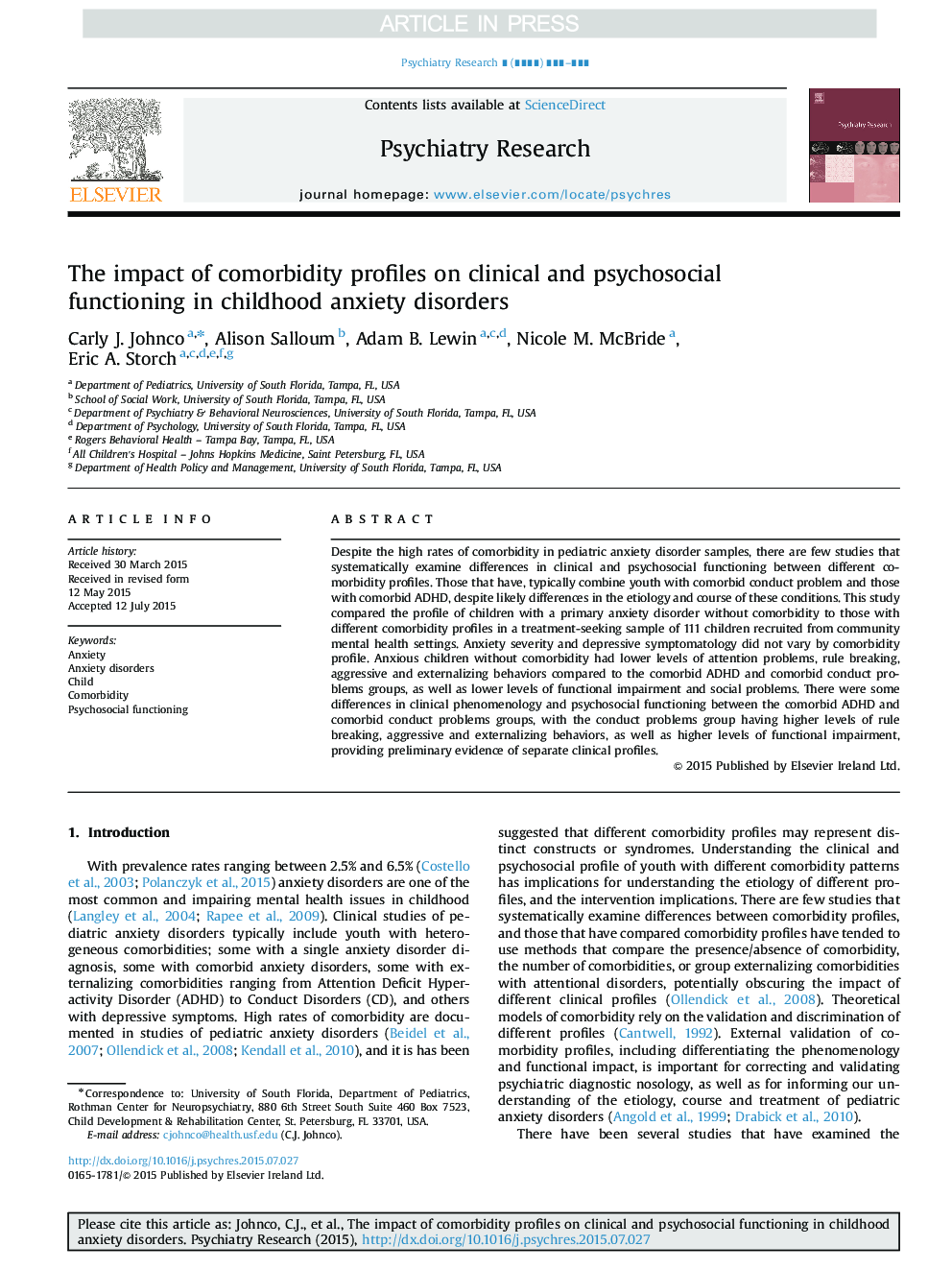| Article ID | Journal | Published Year | Pages | File Type |
|---|---|---|---|---|
| 6814006 | Psychiatry Research | 2015 | 8 Pages |
Abstract
Despite the high rates of comorbidity in pediatric anxiety disorder samples, there are few studies that systematically examine differences in clinical and psychosocial functioning between different comorbidity profiles. Those that have, typically combine youth with comorbid conduct problem and those with comorbid ADHD, despite likely differences in the etiology and course of these conditions. This study compared the profile of children with a primary anxiety disorder without comorbidity to those with different comorbidity profiles in a treatment-seeking sample of 111 children recruited from community mental health settings. Anxiety severity and depressive symptomatology did not vary by comorbidity profile. Anxious children without comorbidity had lower levels of attention problems, rule breaking, aggressive and externalizing behaviors compared to the comorbid ADHD and comorbid conduct problems groups, as well as lower levels of functional impairment and social problems. There were some differences in clinical phenomenology and psychosocial functioning between the comorbid ADHD and comorbid conduct problems groups, with the conduct problems group having higher levels of rule breaking, aggressive and externalizing behaviors, as well as higher levels of functional impairment, providing preliminary evidence of separate clinical profiles.
Related Topics
Life Sciences
Neuroscience
Biological Psychiatry
Authors
Carly J. Johnco, Alison Salloum, Adam B. Lewin, Nicole M. McBride, Eric A. Storch,
